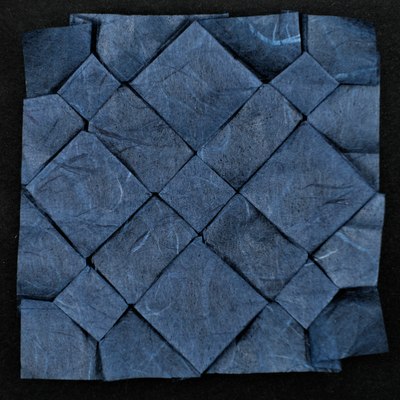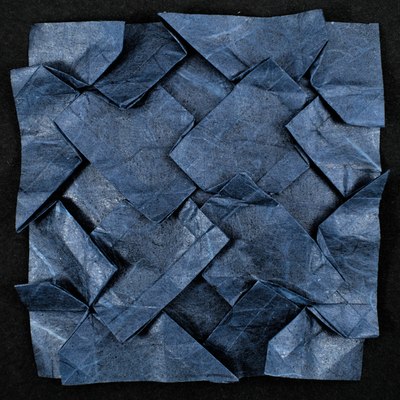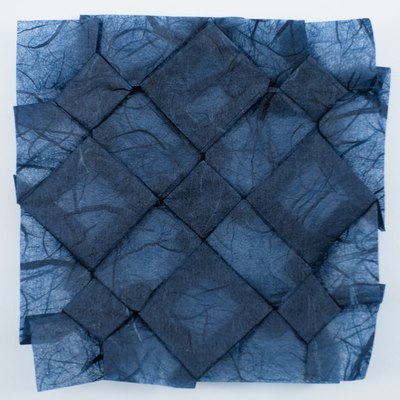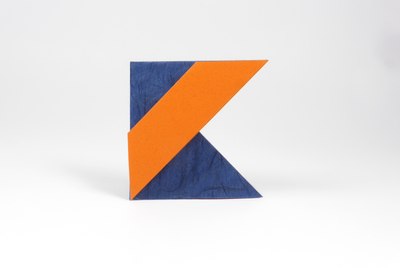Unryu Paper Review




I folded Composition of Squares II from a square of thin Unryu paper, and as you can easily notice, the fold didn’t go very well. On my first attempt at using this paper (folding another similar model), I tried to fold it without any preparation and failed miserably: it was just too soft for geometric folding which requires sharp and precise creases. On my second attempt, whose end result you can see here, I used MC (methylcellulose), which made the paper crispier and allowed me to finish the model at all. All the notes below pertain to Unryu treated with MC.
This paper is very thin, but thickness varies somewhat. This is easily visible against a back-light, and even against a light background (see the last image). Individual pieces of kozo, which create the beautiful pattern this paper is famous for, can locally make the paper much thicker than elsewhere and make precreasing precisely even harder than it already is.
And precreasing is difficult indeed, since even after treatment with MC this paper is quite soft and does not like being folded in straight lines. Since the thickness and grain direction are not uniform, precreased lines tend to sway to the sides, and it is hard to maintain a constant direction. Perhaps if I had folded the complete grid, the result would have been better, but with only selected lines precreased, the precrease ended up skewed which is visible in the finished model. The pattern of kozo fibers going in different directions also masks creases very well, especially on the side without MC. On one hand, this is good since the construction lines are well hidden and do not distract the viewer. On the other, their visibility is so poor that it’s hard to find reference points when folding, which once again reduces precision.
Compared to pre-creasing, the collapse went relatively well (the collapse is rather simple in this model, though). The paper’s memory is fine, but certainly not very good, and you can see in the finished model that the creases have a tendency towards unfolding.
So, in the end, what can I say about Unryu? It’s a beautiful type of paper, but its folding properties are poor, at least for tessellations. Without MC, it was unusable, with MC it fared poorly. Possibly, it’s better for other kinds of models.
But there is a way of using Unryu which makes it suitable for tessellations. If you glue it onto a sheet of another paper, you can have the best of both worlds: Unryu’s looks and the other paper’s folding properties. I used Unryu this way in my Kotlin Logo model, and it turned out great. Thin Unryu is so thin that it doesn’t affect the base paper’s folding properties much, except for the spots with thicker kozo strands. One culprit is that due to Unryu’s translucency, you will be able to see some of the paper beneath it, so you have to find a matching color. In the case of Kotlin Logo, where I needed duo paper with contrasting colors (blue and orange), I had to put a third layer of paper, blue tissue paper, in between the two outer layers, since otherwise I would be able to see orange between the blue Unryu fibers.
If you are willing to invest a little time in making such multi-tissue or sandwich paper, Unryu can become your friend even for tessellations. It’s a difficult paper to work with, but its beauty makes even a big time investment potentially worthwhile.
Comments